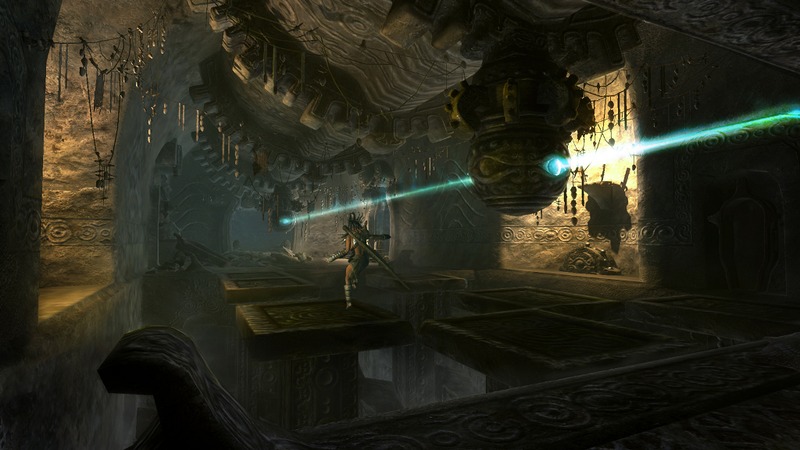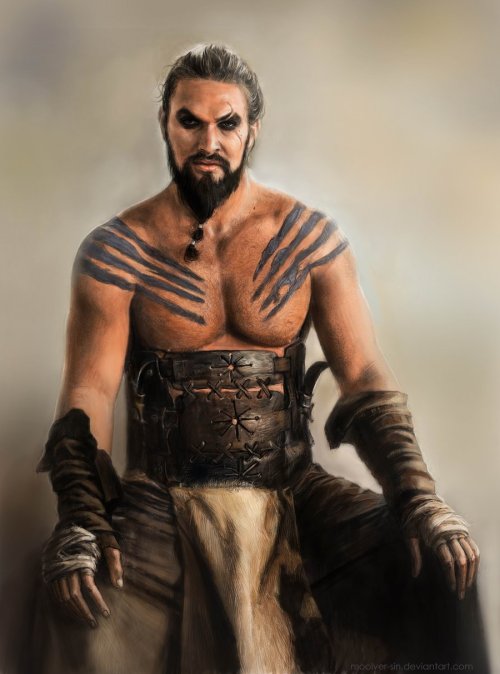-- NOTES --
The town of Seven Stones Ridge, and in fact, the Blue Fox clan, is run by the Duncohr family. What you see below are notes on the older NPCs.
The Duncohrs have been weaponsmiths for generations. Originally, the family were clansmen of the Grath. They led the clanwar that is referred to as The Separation, which broke off their village of Seven Stones Ridge from the Grath. The new clan is called: The Blue Fox.
The Cimmerian blue fox is a crafty animal. During the Separation, the men from Seven Stones Ridge did not fight in the usual face-to-face manner. The Cimmerian Way was thrown aside in favor of a more guerilla style of combat. It was the only way to fight a superior force. During the conflict, that lasted nearly two years, the Grath started referring to their foes as "Foxmen" or "Blue Foxmen". It is a comparison between the Stoner fighting style and the guile and ingenuity of the Cimmerian blue fox.
It also helped that the area of Seven Stones Ridge is pocketed by blue fox warrens.
The native Cimmerian word for the blue fox is "urro", and, thus, the clansmen call themselves Urrough, Foxmen, or Blue Foxmen, interchangeably.
Old Fionn is an ageing mastersmith. He founded Seven Stones Ridge. Maeoral, his wife, died during the Separation, and Old Fionn is embittered about her loss, even after 20 years. They had five sons: Finn, Dael, Eanbotha, and Eregerth. The fifth son, Cael, is Dael's twin, but that one is without honor. The clansmen will not speak about him or even acknowledge his existence.
Finn Elder is the current Chieftain of the Blue Fox clan. This is Caelis' father. Lyme, his wife, died during the childbirth of triplets. Caelis' elder brother is Branoc, and Caelis' twin, Padran, was still born. Padran is buried in the Mound of the Dead within the village.
Dael runs the Duncohr Forge with Finn Elder. His wife would not turn away from her family during the Separation and remained a Grath.
Dael's daughter, Brenna, raised Caelis and his brother Branoc, though she is only a few years older then they. Brenna is an herbalist.
Brenna married an Aesir boy that was sent to live among the Foxmen as an act of good-faith trade. Hrathnar owns the three horses in the clan. He and Brenna have a little girl they named, in the Aesir fashion, Freya. Hrathnar helps run the Duncohr Forge and urges expanded trade with other clans. Hrathnar taught you to speak the Nordheimer language.
Eanbotha is the Skywarrior. That's the War Chief position among the Blue Fox. His wife and children did not survive the harsh winter that occurred during the Separation. Since, he has made company with Nahn the Weaver, though he will not marry her.
Nahn is the mother of both Foilloch and Huogh.
Eregerth was a wayward Duncohr son. He had his fill of bloodshed, brother against brother, during the Separation. He killed too many of his friends. A decade agone, he left the clan to follow his wanderlust. He has since had many adventures and just recently returned to Seven Stones Ridge. He likes a good, hardy drink. And, Caelis is his favorite nephew. He has given Caelis a shirt of Turanian chainmail--a kingly gift, indeed.
The town of Seven Stones Ridge, and in fact, the Blue Fox clan, is run by the Duncohr family. What you see below are notes on the older NPCs.
The Duncohrs have been weaponsmiths for generations. Originally, the family were clansmen of the Grath. They led the clanwar that is referred to as The Separation, which broke off their village of Seven Stones Ridge from the Grath. The new clan is called: The Blue Fox.
The Cimmerian blue fox is a crafty animal. During the Separation, the men from Seven Stones Ridge did not fight in the usual face-to-face manner. The Cimmerian Way was thrown aside in favor of a more guerilla style of combat. It was the only way to fight a superior force. During the conflict, that lasted nearly two years, the Grath started referring to their foes as "Foxmen" or "Blue Foxmen". It is a comparison between the Stoner fighting style and the guile and ingenuity of the Cimmerian blue fox.
It also helped that the area of Seven Stones Ridge is pocketed by blue fox warrens.
The native Cimmerian word for the blue fox is "urro", and, thus, the clansmen call themselves Urrough, Foxmen, or Blue Foxmen, interchangeably.
Old Fionn is an ageing mastersmith. He founded Seven Stones Ridge. Maeoral, his wife, died during the Separation, and Old Fionn is embittered about her loss, even after 20 years. They had five sons: Finn, Dael, Eanbotha, and Eregerth. The fifth son, Cael, is Dael's twin, but that one is without honor. The clansmen will not speak about him or even acknowledge his existence.
Finn Elder is the current Chieftain of the Blue Fox clan. This is Caelis' father. Lyme, his wife, died during the childbirth of triplets. Caelis' elder brother is Branoc, and Caelis' twin, Padran, was still born. Padran is buried in the Mound of the Dead within the village.
Dael runs the Duncohr Forge with Finn Elder. His wife would not turn away from her family during the Separation and remained a Grath.
Dael's daughter, Brenna, raised Caelis and his brother Branoc, though she is only a few years older then they. Brenna is an herbalist.
Brenna married an Aesir boy that was sent to live among the Foxmen as an act of good-faith trade. Hrathnar owns the three horses in the clan. He and Brenna have a little girl they named, in the Aesir fashion, Freya. Hrathnar helps run the Duncohr Forge and urges expanded trade with other clans. Hrathnar taught you to speak the Nordheimer language.
Eanbotha is the Skywarrior. That's the War Chief position among the Blue Fox. His wife and children did not survive the harsh winter that occurred during the Separation. Since, he has made company with Nahn the Weaver, though he will not marry her.
Nahn is the mother of both Foilloch and Huogh.
Eregerth was a wayward Duncohr son. He had his fill of bloodshed, brother against brother, during the Separation. He killed too many of his friends. A decade agone, he left the clan to follow his wanderlust. He has since had many adventures and just recently returned to Seven Stones Ridge. He likes a good, hardy drink. And, Caelis is his favorite nephew. He has given Caelis a shirt of Turanian chainmail--a kingly gift, indeed.
















